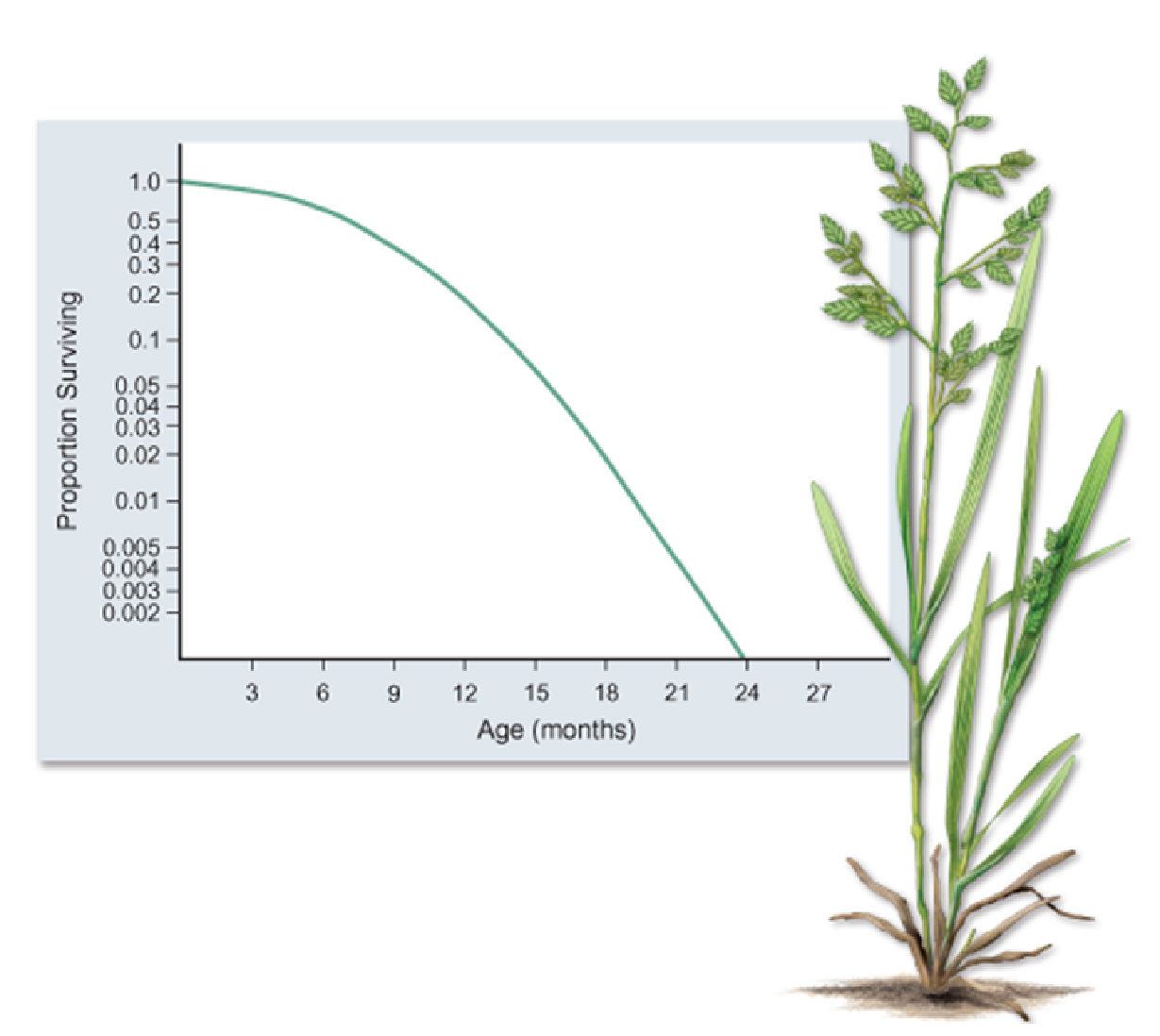A farmer noticed that two of her cotton plants produce cotton with a slight greenish hue. By repeatedly crossing the greenish plants, she has produced a variety of deep-green cotton without the use of any dyes. This is an example of
A) convergent evolution.
B) natural selection.
C) artificial mutation.
D) artificial selection.
E) inheritance of acquired characteristics.
D
You might also like to view...
What is the most reasonable conclusion that can be made from data graphed in the figure?

A. After high mortality early in life, survivorship becomes constant for the rest of life.
B. Survivorship is constant throughout life.
C. After low mortality early in life, mortality increases to a constant rate for the rest of life.
D. After following a constant rate early in life, mortality becomes low late in life.
Bacteria use restriction enzymes to
a. integrate viral DNA. b. destroy viral DNA. c. prevent mutation of their DNA. d. copy their genes. e. inhibit the expression of some of their genes.
The smallest particles occurring in soil are referred to as
A) clay. B) gravel. C) sand. D) silt.
Imagine that one of the original four mice that escape from a research lab is blind due to a genetic defect. If the escaped mouse breeds and most of the mice born in subsequent generations are blind from birth, this is most likely a case of
A) selective mutation. B) the founder effect. C) artificial selection. D) natural selection. E) an equilibrium population.